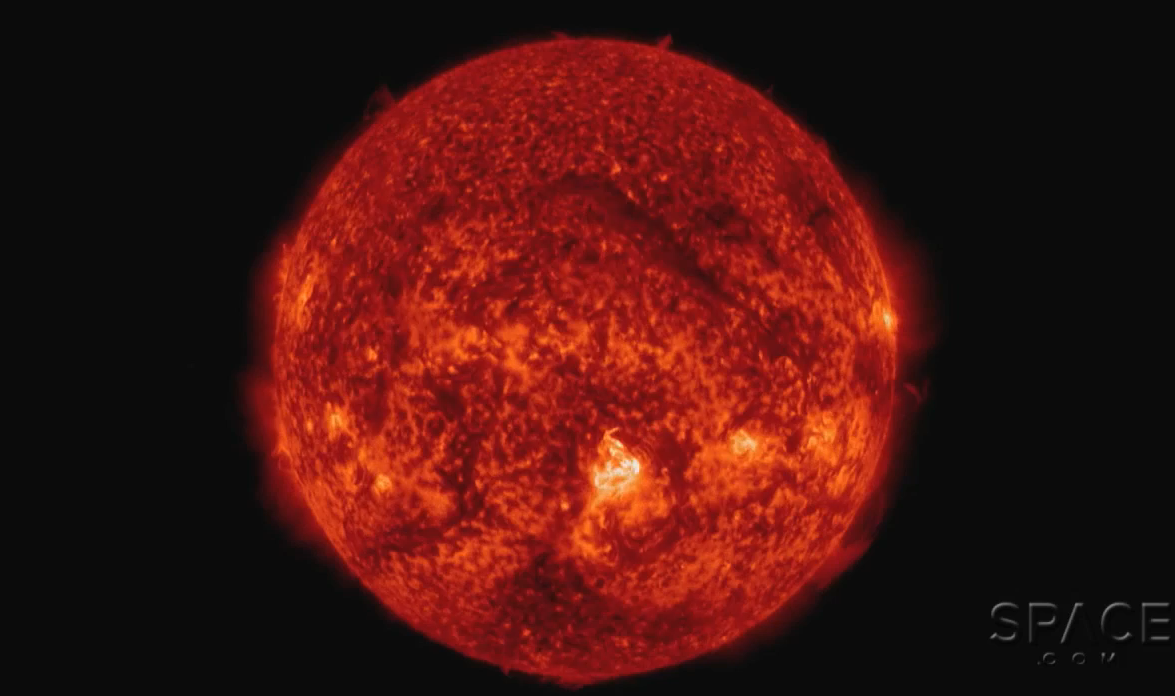Intense Solar Eruption Captured by NASA Spacecraft (Video)
A huge tendril of super-hot plasma that had been creeping across the face of the sun erupted Tuesday (Sept. 2) in a striking solar storm that may send a wave of charged particles in Earth's direction.
Video of the solar eruption captured by NASA's sun-watching Solar Dynamics Observatory shows a cloud of solar plasma being hurled from the sun's surface during the rippling blast.
Debris from the solar explosion could be traveling in the direction of Earth, according to Spaceweather.com, which tracks stargazing and space weather events. Further observations should confirm whether the eruption was actually an Earth-directed coronal mass ejection, or CME.
CMEs occur when the sun's magnetic field lines become so warped that they snap like rubber bands then reconnect at other points. These breaks can leave gaps where the sun's plasma spews into space. CMEs can occasionally spark geomagnetic storms when they collide with Earth. These disturbances can interfere with electronics, cause radio blackouts and produce stunning auroras.
In the days before the eruption, the filament of dark plasma looked like a long shadow on the sun that stretched some 372,823 miles (600,000 kilometers) — that's more than three times the diameter of Jupiter, the largest planet in the solar system. Amateur astrophotographers from around the world had been sending Spaceweather.com amazing amazing images of the filament over the past few days.
The blast occurred a day after a sunspot on the farside of the sun produced a "sizeable and fairly fast" CME according to the National Oceanic and Atmospheric Administration's (NOAA) Space Weather Prediction Center. The CME was moving at approximately 4.5 million mph (2,000 km/s), and the source of the eruption was expected to rotate to the Earth-facing side of the sun in the next few days.
"It's difficult to say what this region will hold as it rotates into view, but some potential for continued activity is surely there," NOAA officials wrote.
Breaking space news, the latest updates on rocket launches, skywatching events and more!
Follow Megan Gannon on Twitter and Google+. Follow us @Spacedotcom, Facebook or Google+. Originally published on Space.com.

Megan has been writing for Live Science and Space.com since 2012. Her interests range from archaeology to space exploration, and she has a bachelor's degree in English and art history from New York University. Megan spent two years as a reporter on the national desk at NewsCore. She has watched dinosaur auctions, witnessed rocket launches, licked ancient pottery sherds in Cyprus and flown in zero gravity on a Zero Gravity Corp. to follow students sparking weightless fires for science. Follow her on Twitter for her latest project.


